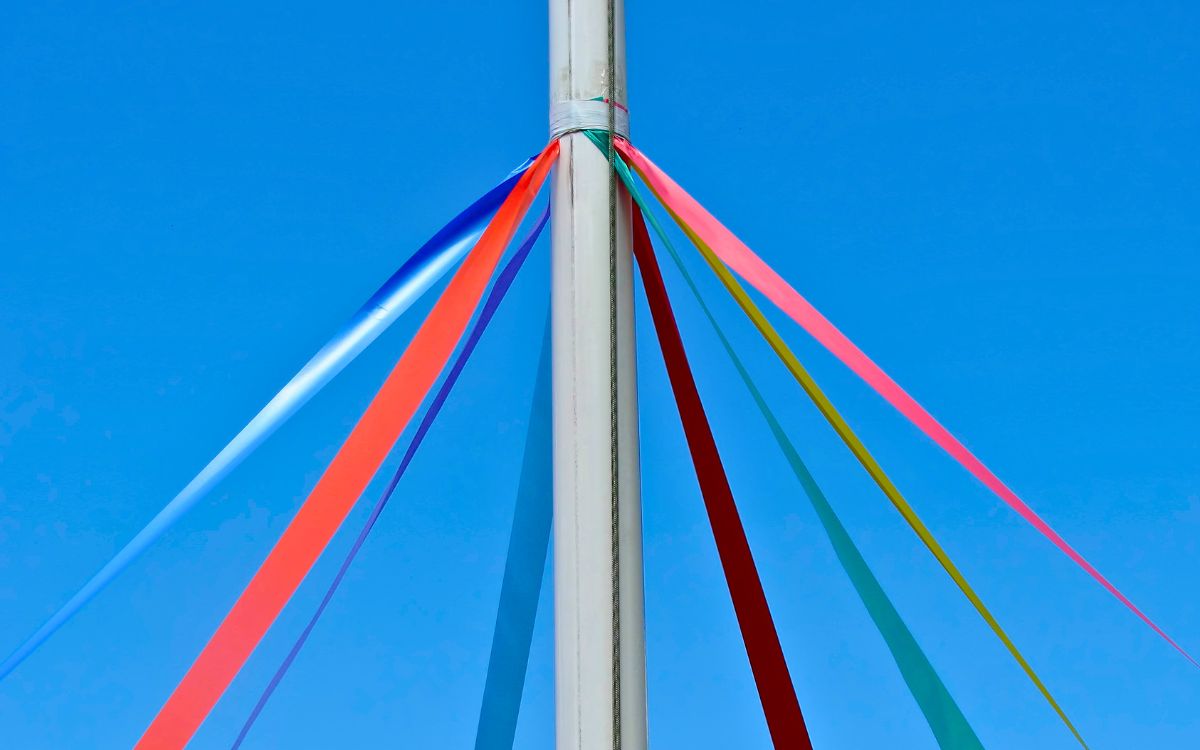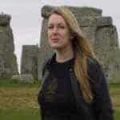It’s May Day so POLLYANNA JONES is going to tell us about some of the UK’s more bizarre rites of spring
May 1st is celebrated as May Day in the British Isles, with the following Monday gifted to the nation as a bank holiday so that we may make merry and enjoy the revelry of this ancient festival.
Scenes of Morris dancing and girls skipping around the maypole are not uncommon, but scratch beneath the veneer of respectable tradition, and you will find some rather intriguing and even dangerous practices associated with this festival. Below are just a handful of some of these traditions.
The Bridge Jumpers of Oxford
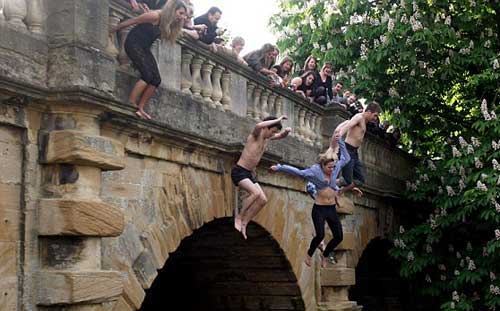
It was Victorian poet, Matthew Arnold that famously referred to Oxford as the “city of dreaming spires” in his poem, Thyrsis, in tribute to the glorious architecture of the city that is still celebrated to this day. A place of academic dreams, to win a place at Oxford University is a prize for the exceptional student.
It is surprising then, that with such a high concentration of intellectuals, each year scores of students leap off Magdalen Bridge into the waters of the River Cherwell in the fashion of frenzied lemmings. This is a relatively recent tradition, believed to have begun at the start of the 1980s.
Leaping into a river is not wise at the best of times. But the Cherwell can particularly shallow at the start of May. As a result, many of the bridge jumpers have suffered serious injury. Between 1995 and 2005, Jeremy Fairbank, a consultant spine surgeon at the Nuffield Orthopaedic Centre had heard of at least three spinal fractures caused by this tradition. One of the revellers was left paralysed. 40 people were injured during 2005’s event.
A hard river bed is not the only danger awaiting the bridge jumpers; all sorts of rubbish lies unseen beneath the river’s surface, waiting to wound the unwary. The years have seen numerous bridge closures following spates of bad accidents, but this folly still continues.
Horsing Around in Padstow
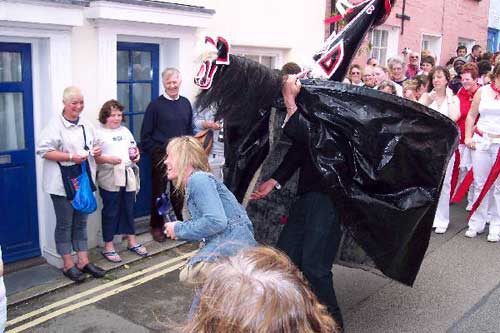
The picturesque fishing town of Padstow in Cornwall celebrates the May Day with an “Obby ‘Oss Festival”. This includes the attempted capturing of unwary maidens by revellers dressed as horses. The costumes are very similar to the Mari Lwyd traditions of South Wales, but instead of being a midwinter activity, this one sees the start of summer in.
At midnight on May 1st, the still of the night is broken by singing of “The Night Song” outside The Golden Lion inn. The choir then travels about the town, singing their tune to remind the men to collect the May (blossom) in from the woods.
By sunrise, the whole town is decorated with greenery and flowers, and two processional groups make their way to the maypole, to the tune of “The Day Song”. Each group is led by an ‘oss, respectively known as the “Old” and “Blue Ribbon” ‘osses.
Each ‘oss is accompanied by a drummer, and they will canter through the town snapping their jaws at maidens, before attempting to grab them. To any casual visitor, the sight of a character in black with a grotesque mask, chasing young women might be a little unnerving, but it is all part of the fun. Even the children participate, operating smaller horse costumes that are known as “Colts” or “Juniors”.
By late afternoon, the two ‘osses will dance together at the maypole, and may fall down dead, before leaping up back to life, in a traditional theme of death and rebirth that is seen in so many folk performances up and down the country.
Whilst the first account of this practice appears in 1803, it is thought that it might be a far older pre-Christian custom. Horses were associated with fertility, and lordship of the land, and the Celtic goddess Epona. With the Pagan symbolism of May Day, it is likely that this is an older tradition that has been adapted to fit in with this summertime festival.
Hanging the Straw Man
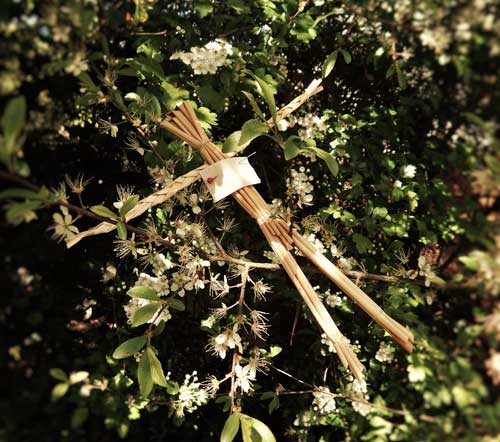
The Welsh celebrate May in a typical Celtic style, with bonfires lit on the eve of May 1st. Known as “Nos Galan Haf”, May Day Eve is noted as being a night of spirits, in the Welsh tongue, “Yysbrydnos”, when divination rites might be observed and the dead communed with. The bonfires were a common sight across South Wales until the mid-Nineteenth Century, yet there is somewhat of a resurgence of indigenous customs that see a smattering of these events take place once more.
May Day itself is known as “Calan Mai” or “Calan Haf”. Bawdy dancing with sexual overtones would be performed, typical of the Beltane fertility festivals seen around the other Celtic Nations, and homes would be decorated with May blossom, gathered on “Nos Galan Haf”.
Fighting is a big part of this festival; with summer and winter doing battle. Winter is defeated, allowing the May Queen to be crowned, to then marry her May King. Dancing and drinking would then take place, usually to the next morning.
In Caernarvonshire and Anglesey, straw men would cause endless amounts of trouble. “Crogi gwr gwellt”, in English, “Hanging the straw man”, was a game played between love rivals.
Should a man find himself losing his sweetheart, and she a new love, the ditched suitor would make a figure from straw and pin a note to it before hanging it somewhere around the home of his lost love.
The figure would represent the love-rival, and as you can imagine, the notes would seldom be flattering. As a result, these straw men were responsible for many a fight come May Day, bringing violence into the fertility rituals.
Do you celebrate May Day? Tell us about it in the comments section below!

